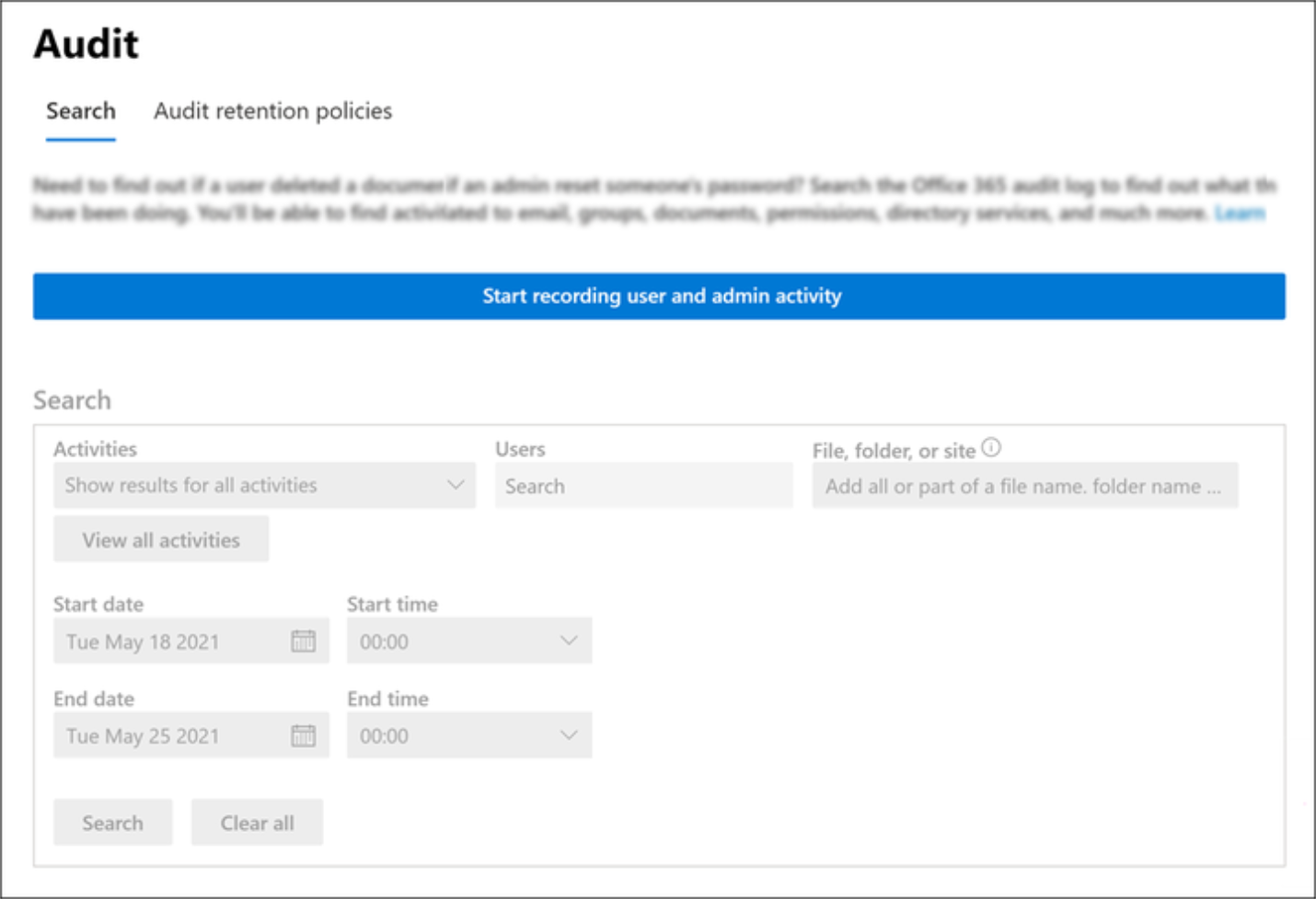Microsoft Office 365 Input
The Microsoft Office 365 Input enables Graylog to ingest logs from Office 365, Microsoft's widely used cloud-based productivity suite.
Prerequisites
Before proceeding, ensure that the following prerequisites are met:
-
To use the Office 365 plugin, create and authorize a client application through your organization’s Microsoft Azure portal. Your Graylog installation will then poll your Office 365 audit log and ingest new logs into Graylog on a specified interval.
-
A working Office 365 subscription with access to audit logs and to the Microsoft Azure portal for your organization is required. (E5/A5 accounts typically have the required access, but this will need to be verified.)
Required Third-Party Setup
To enable integration, complete the following required setup with your third-party service:
-
Create an Azure Active Directory application with the following actions:
-
Provide an application name (e.g.
Graylog Log Access). -
Choose Single tenant or Multi-tenant, based on your organization's directory setup.
-
Skip the Redirect URI option.
-
-
After registration, note the following values:
-
Application (client) ID
-
Directory (tenant) ID
-
-
Create a client secret.
-
Add Office 365 Management API permissions and assign select all available permissions.
-
Grant admin consent to apply permissions.
-
Navigate to the Audit Log Search page in Microsoft Purview and click the Start recording user and admin activity button to enable audit logging. Up to 24 hours may be needed for logs to enter Graylog the first time Unified Audit Log is enabled. We strongly recommend waiting 24 hours before proceeding with O365 Input setup in Graylog to ensure your subscription in Azure is properly set up for audit logging. If there is no blue button stating Start recording user and admin activity, then audit logging is already enabled, and you can proceed with the remainder of input configuration.

Required Configuration Values
In your third-party configuration, make note of the following values that are required when configuring the input in Graylog:
-
Application (client) ID
-
Directory (tenant) ID
-
Client Secret
Input Type
This input is a
Associated Illuminate Content Pack
This log source has associated Illuminate content:
Input Configuration
Follow the input setup instructions. During setup of this input, you can configure the following options:
| Configuration Option | Description |
|---|---|
|
Input Name |
Provide a unique name for your new input. |
|
Directory (tenant) ID |
The ID of the Active Directory instance for which Graylog will collect log data. |
|
Application (client) ID |
The ID of the Client Application created above. |
|
Client Secret |
This is the client secret of your registered application in Microsoft Entra ID. |
|
Subscription Type |
Indicates what type of Office 365 subscription you have. |
|
Log Types to Collect |
Determines which of the five available log types the input will pull from Office 365. All log type options are selected by default: Azure Active Directory, SharePoint, Exchange, General, and DLP. |
| Polling Interval |
Determines how often (in minutes) Graylog checks for new log data. The shortest allowable interval is 5 minutes. We recommend leaving this at the default value. Value should not be less than 1 (minute). |
|
Drop DLP logs containing sensitive data |
O365 produces a summary log with no sensitive data and a detailed log with sensitive data for each DLP event. When set, this option causes detailed logs to drop and prevent sensitive data from being stored in Graylog. |
| Enable Throttling |
Enables Graylog to stop reading new data for this input whenever the system falls behind on message processing and needs to catch up. |
| Store Full Message |
Permits Graylog to store the raw log data in the |
Next Steps
After you complete input setup, visit Input Diagnosis for testing and validation of the new input. Use this functionality to help troubleshoot any connection issues.
Further Reading
Explore the following additional resources and recommended readings to expand your knowledge on related topics:

